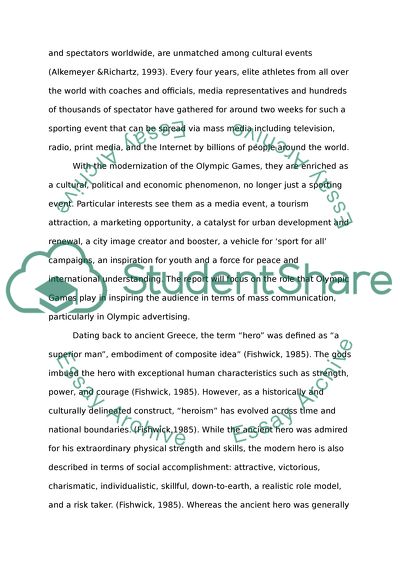Cite this document
(“Analysis of Heroism of Olympic Athletes in Olympic Advertising from Research Paper”, n.d.)
Retrieved from https://studentshare.org/journalism-communication/1422637-analysis-of-heroism-of-olympic-athletes-in-olympic
Retrieved from https://studentshare.org/journalism-communication/1422637-analysis-of-heroism-of-olympic-athletes-in-olympic
(Analysis of Heroism of Olympic Athletes in Olympic Advertising from Research Paper)
https://studentshare.org/journalism-communication/1422637-analysis-of-heroism-of-olympic-athletes-in-olympic.
https://studentshare.org/journalism-communication/1422637-analysis-of-heroism-of-olympic-athletes-in-olympic.
“Analysis of Heroism of Olympic Athletes in Olympic Advertising from Research Paper”, n.d. https://studentshare.org/journalism-communication/1422637-analysis-of-heroism-of-olympic-athletes-in-olympic.


